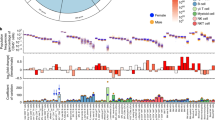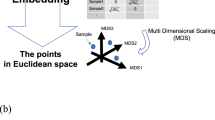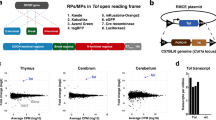Abstract
The intensity of the mixed lymphocyte response (MLR) depends on the genetic disparity between the donors of responding and stimulating cells. Differences in the major histocompatibility complex (MHC) and Mls1 antigens induce the strongest responses. However, even with comparable incompatibilities in MHC and Mls antigens, some strains of genetically defined mice respond remarkably better than other strains. Apparently other, so far undefined, genetic factors contribute to the magnitude of the MLR. The strain OcB-9 (H2pz) has 87.5% genes from the strain O20/A (O20) and 12.5% genes from strain B10.O20 (both H2pz). In spite of the overal similarity of their genomes, OcB-9 mice differed from O20 mice in response to three different alloantigens C57BL/10 (H2b), BALB/c (H2d) and CBA (H2k). As both O20 and OcB-9 strains carry identical haplotype H2pz, their differences in alloantigen response depend only on non-MHC genes. We analyzed the genetic basis of these strain differences using (OcB-9 × O20)F2 hybrids, and we mapped a novel locus Alan2 (Alloantigen response 2) on chromosome 4 near D4Mit72 that influences the response to all alloantigens tested. This linkage was significant for C57BL/10 and for BALB/c alloantigens (corrected P values 0.0475 and 0.0158, respectively) and highly suggestive for CBA (corrected P = 0.0661). The response to DBA/1 (H2q) alloantigens exhibited a similar pattern but the linkage was not significant. As MLR reflects the recognition phase of transplantation reaction, identification of human counterparts of the Alan genes and a better understanding of the regulation of alloresponsiveness might lead to a better prediction of patients’ reactions to allografts and to a more individualized measures to prevent rejection.
This is a preview of subscription content, access via your institution
Access options
Subscribe to this journal
Receive 6 digital issues and online access to articles
$119.00 per year
only $19.83 per issue
Buy this article
- Purchase on Springer Link
- Instant access to full article PDF
Prices may be subject to local taxes which are calculated during checkout
Similar content being viewed by others
Author information
Authors and Affiliations
Corresponding author
Additional information
This work was supported by grant OK 394 from the Ministry of Education of the Czech Republic and by the contracts CIPA-CT 940040 and IC15-CT98-0317 from the European Commission.
Rights and permissions
About this article
Cite this article
Havelková, H., Badalová, J., Demant, P. et al. A new type of genetic regulation of allogeneic response. A novel locus on mouse chromosome 4, Alan2 controls MLC reactivity to three different alloantigens: C57BL/10, BALB/c and CBA. Genes Immun 1, 483–487 (2000). https://doi.org/10.1038/sj.gene.6363711
Received:
Accepted:
Published:
Issue Date:
DOI: https://doi.org/10.1038/sj.gene.6363711
Keywords
This article is cited by
-
Gene-specific sex effects on eosinophil infiltration in leishmaniasis
Biology of Sex Differences (2016)
-
Loci controlling lymphocyte production of interferon γ after alloantigen stimulation in vitro and their co-localization with genes controlling lymphocyte infiltration of tumors and tumor susceptibility
Cancer Immunology, Immunotherapy (2010)



